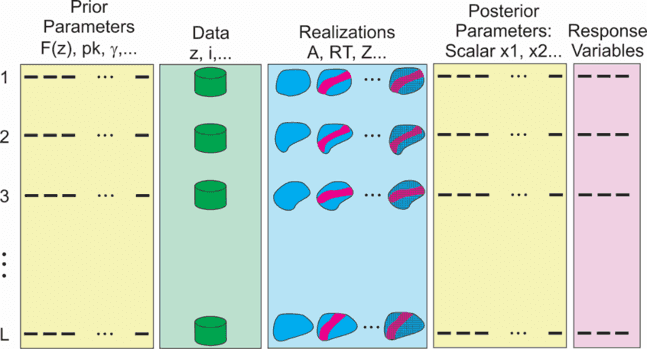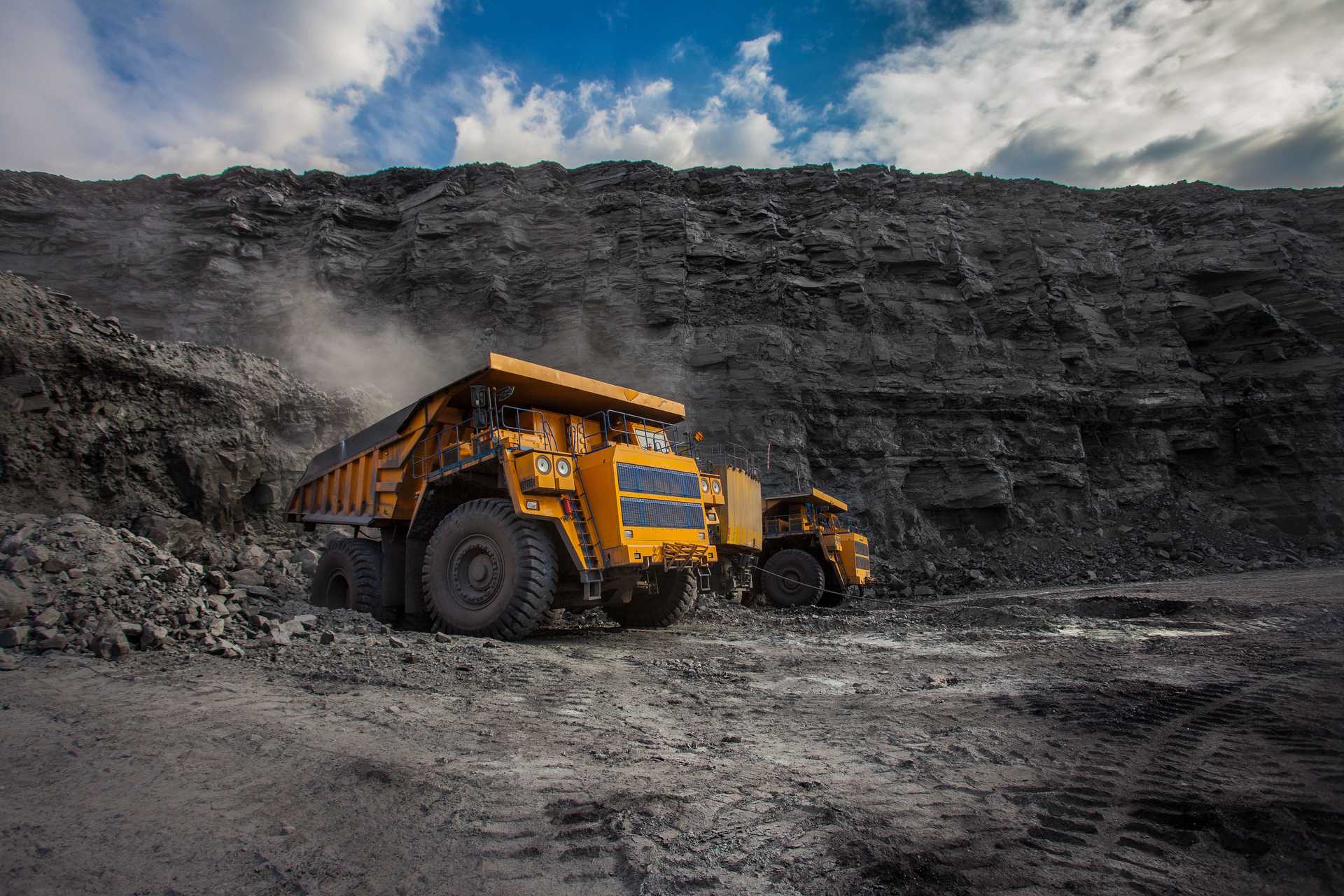Geostatistical simulation of mineral deposits for resource estimates and long-range planning is established. Professionals have access to the methodology, software and training to reliably calculate probabilistic resources. We have come a long way. In the early days, simulation amounted to multiple realizations with fixed input parameters within fixed geological boundaries. Those early studies may have provided useful models of variability and a measure of local uncertainty, but they did not give a reasonable assessment of large-scale resource uncertainty. Now, simulation considers uncertainty in the input parameters, the data, the geological boundaries and correlated multiple variables. This comprehensive workflow permits a realistic understanding of resource uncertainty for production volumes relevant for technical and economic decision making.
The following schematic illustration summarizes the workflow. From left to right, the five colored panels represent (1) realizations of the prior parameters needed for model construction including proportions, histograms and variograms, (2) realizations of the data where missing data and data with error are replaced with realizations of true values, (3) realizations of the geological limits, domains and multiple variables that represent the deposit, (4) summary measures (posterior parameters) that describe the realizations including tonnages, average properties and connectivity, and finally (5) response variables such as the tonnage, grade and quantity of metal within production volumes of relevance including the entire deposit. Resource uncertainty and sensitivity to different aspects of the geological model are directly observed.

The simulated realizations must pass a comprehensive set of checking and validation steps to ensure they are unbiased and fit for purpose. We validate local uncertainty with k-fold validation at each step. Global uncertainty cannot be validated easily; however, experience is accumulating to support our claim that a carefully constructed simulation workflow leads to accurate and precise large-scale resource uncertainty. The conceptual geological model that drives the modeling workflow and required parameters is critically important. Note that the modeling workflow calls for a one-for-one sampling of uncertainty without branching. Each realization is constructed to be a fair sample from the conceptual geological model.
The input modeling parameters and multivariate relationships are available at the scale of the composited data. Simulation at this high-resolution data-scale is convenient to capture complex geological boundary uncertainty and to facilitate model checking. The realizations are blocked up to mining units and production volumes for resource calculations that account for future information and mining selectivity. Each realization provides a different resource estimate. There are outcomes for any resource estimate, for example, the ore grade, tonnage and quantity of metal for a particular stope or bench. The expected value of the outcomes provides the single best estimate. The uncertainty can be summarized and reported as required. In this way, probabilistic resource estimation provides a unique best resource estimate and a measure of uncertainty.
There are many ways to calculate a unique resource estimate including ordinary kriging, indicator kriging and uniform conditioning. Ordinary kriging must be carefully calibrated to the information effect; the described probabilistic resource estimation workflow needs no such calibration. Indicator kriging requires a change of support model that should depend on local conditioning; probabilistic resource estimation captures the change of support directly by block averaging. Uniform conditioning provides uncertainty of blocks within predefined panels; probabilistic resource estimation permits the calculation of uncertainty at any scale within any arbitrary limits. The cost of probabilistic resource estimation is computational; there are no theoretical or practical limits relative to other geostatistical techniques.
An additional benefit to probabilistic resource estimation is that the variability represented by the realizations is correct, that is, not smoothed by kriging or a regression-like estimator. The calculation of geometallurgical parameters such as recovery, throughput and reagent consumption based on the realizations will be unbiased. The relationships between geological properties and metallurgical parameters are nonlinear and application to a smoothed kriged model would lead to biased results.
Resource Modeling Solutions provides the software tools and workflows to estimate probabilistic resources in an efficient and effective manner. An important outstanding challenge of considering probabilistic resource estimates is the use in mine planning. At this moment, virtually all mine planning software is designed to use a single block model. The expected grade block model could be passed to planning; however, that would eliminate some of the advantages of the probabilistic resource estimates. Research and development opportunities remain.



